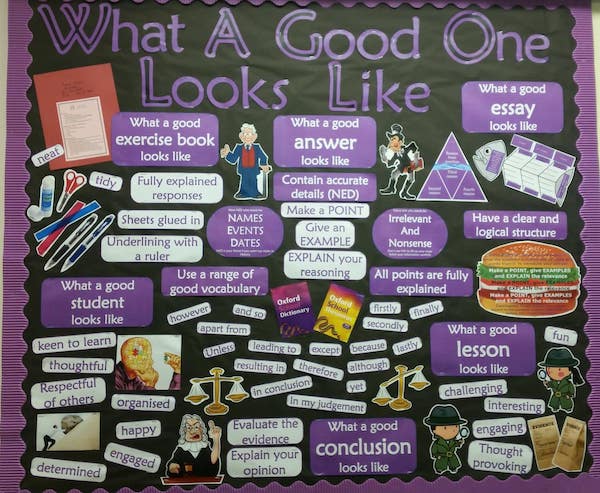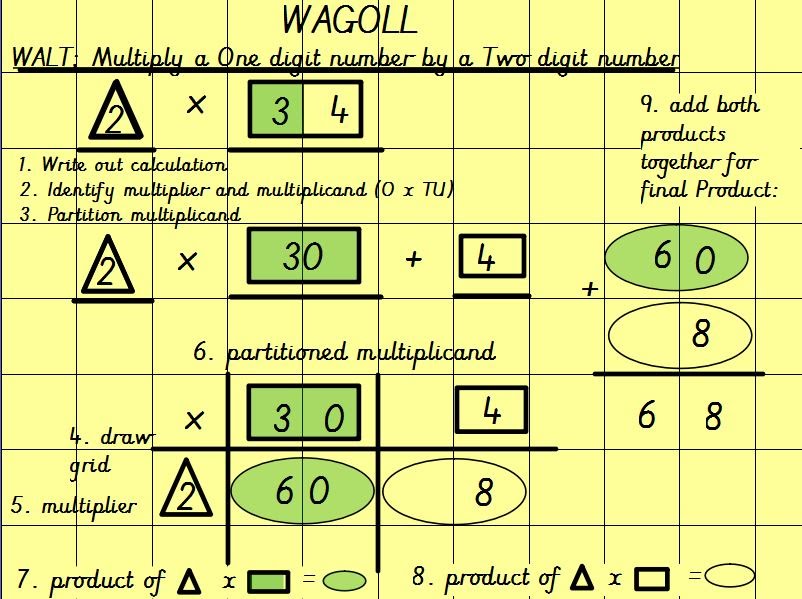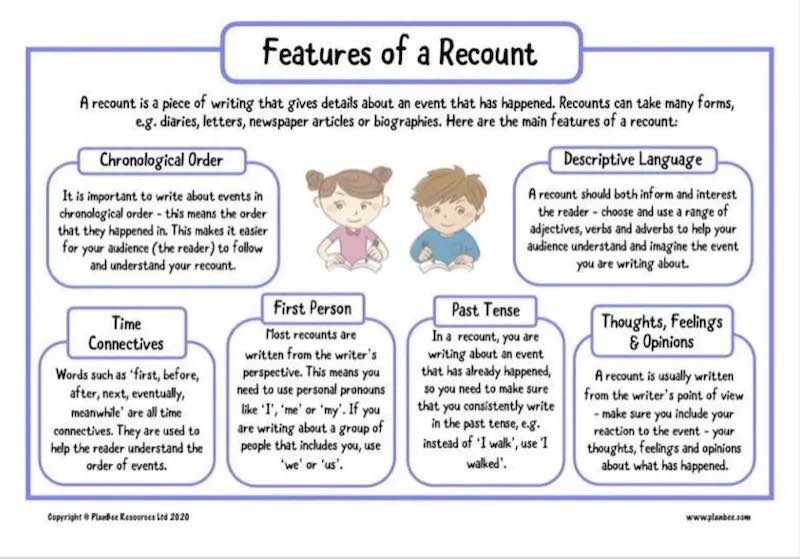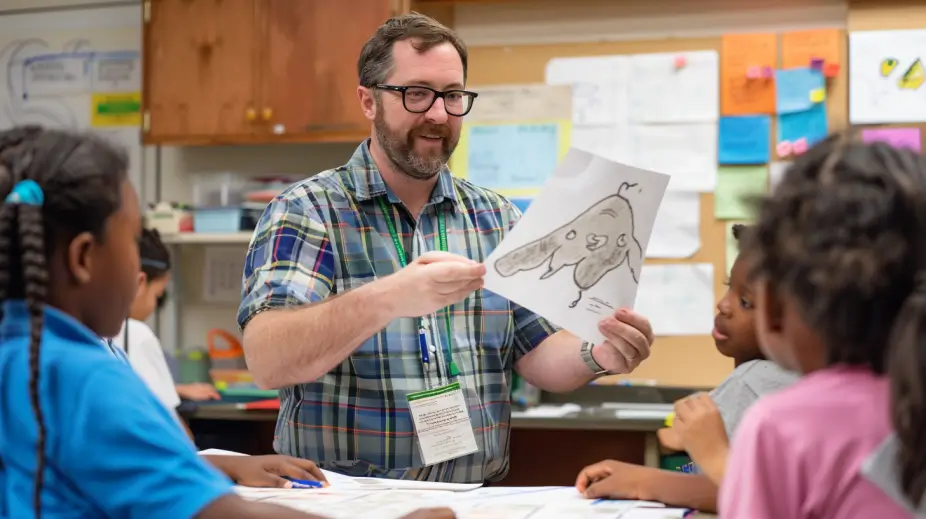WAGOLL: Using Exemplars to Improve Student Writing
Complete 2025 guide to WAGOLL (What A Good One Looks Like) for UK teachers. Free modelling strategy, best practices, and how to create effective examples across subjects.


The term "WAGOLL," which stands for "What A Good One Looks Like," refers to high-quality models or examples that teachers use to guide students toward producing exceptional writing. These models are integral in teaching various forms of , such as explanation texts and non-chronological reports, and are particularly valuable in developing effective literacy skills. By clearly demonstrating what excellent writing entails, WAGOLLs enable students to grasp the essential attributes of strong, effective writing.
Primarily employed as a tool in writing instruction, WAGOLLs facilitate a deeper understanding by providing concrete examples of successful work. This practice helps students identify and internalize the specific skills and knowledge necessary to excel in writing tasks. By integrating these exemplary models into classroom activities, educators give students the chance to dissect and comprehend the components of quality writing, enhancing their learning process.
WAGOLLs also serve a critical role in setting clear academic standards and expectations. They outline the level of achievement that students should strive for in order to meet the objectives of the lesson. Regarded as a foundational element in literacy education, these models offer rich opportunities for students to engage more profoundly with the lesson's goals and allow for meaningful exploration through comprehension questions. This strategic use of WAGOLLs not only elevates students' writing capabilities but also boosts their confidence in applying these skills independently.
Teachers may use WAGOLL as a visual aid to bring creativity in class at any time during lessons. Following are some of the ways teachers can use WAGOLL in their day to day teaching:
Success Criteria: WAGOLL can be used to give students a ‘Success Criteria’ or to show them what worked well in creating a piece of writing. By doing so, teachers would help their students understand the steps they must take for effective writing.
Self-assessment: WAGOLL resources can be used to help students perform peer and self-assessment. This would help students to mark their work and they would be able to identify what exactly is needed to create a WAGOLL.
Motivation: Teachers may use WAGOLL to help motivate their students to improve their work. Teachers may use their highest-quality model texts, what they have composed as a WAGOLL example, to show that their students are doing great.
Creativity: If their students show a lack of inspiration, teachers may show WAGOLL resources to the students. By doing so, they would help students to adapt ideas and bring creativity to their writing skills.
Better Understanding: Teachers may use WAGOLL resources while introducing their students to a new style of writing. By showing it to the students, teachers would help their students to visualise and understand it better.

An abundance of aspiration, powerful success criteria and detailed model texts, will help children create the best of their work.
In short, WAGOLL resources act as the most effective approaches to classroom innovation that help students to find positive approaches to success. The ability to mark their work, wouldn't only save teachers' time but may also create independence in students. Children may develop a better understanding of text structure and improve their reading skills at the same time.

Teachers use WAGOLL for non-chronological writing by showing students exemplar texts that demonstrate clear headings, technical vocabulary, and logical organization without time sequence. Students analyze these models to identify key features like subheadings, topic sentences, and factual language before creating their own non-chronological reports. This approach helps students understand text structure and develop confidence in organizing information thematically rather than chronologically.
Non-chronological writing in educational settings offers a unique approach to narrative construction, emphasizing the manipulation of time to enhance storytelling. This style does not adhere to a traditional cause-and-effect sequence but strategically reveals details to build tension or highlight specific aspects of a story. For instance, the effects of certain actions within a story might be presented upfront, deviating from a linear progression to engage the reader's curiosity and maintain suspense.
Despite this non-linear narrative style, non-chronological writing maintains a coherent structure, typically with a defined beginning, middle, and end. This structure meets readers' expectations and maintains their interest, encouraging continued engagement with the text.
In an educational context, such as in primary schools, non-chronological reports are utilized to teach students about a wide array of topics, from sports and religions to countries and celestial bodies. These reports focus on detailing a single subject without the constraints of chronological order, providing a rich exploration of the topic.
Teachers often introduce this form of writing by presenting students with model texts or resource packs showcasing exemplary non-chronological reports. These models highlight essential features of effective reports:
Through classroom activities, students are encouraged to examine these reports, identify their structural features, and engage in creating their own. Teachers guide students from the initial research phase, using tools like spider diagrams for note-taking, through drafting and revising their texts.
Peer editing and teacher feedback are integral to this process, helping students refine their work. Ultimately, students are tasked with producing a polished report that incorporates not only factual accuracy and thorough research but also visually appealing elements and clear, accessible language. This holistic approach not only improves their writing skills but also deepens their understanding of the subject matter.

WAGOLL promotes independence by providing clear success criteria that students can use to self-assess and improve their own writing without constant teacher intervention. When combined with editing stations and peer assessment activities, students learn to identify quality features in their work and make improvements independently. This scaffolded approach gradually reduces reliance on teacher feedback while building confidence and self-correction skills.
WAGOLL (What A Good One Looks Like) is a powerful strategy that can be instrumental in promoting student independence, particularly in the realm of writing. Here's how this technique can be applied to foster effective and confident writers:
In a lesson on persuasive writing, a teacher might present a WAGOLL example of a persuasive letter. Students analyze the key features, such as the introduction, supporting arguments, and conclusion. They then apply these insights to their writing, crafting persuasive letters on topics they are passionate about.

Effective WAGOLL implementation involves building a digital portfolio of exemplar work from previous students, organized by text type and skill level for easy access. Teachers should present WAGOLLs alongside clear success criteria and use interactive annotation tools to help students identify key features. Regular rotation of examples and student-generated WAGOLLs keeps the approach fresh and culturally relevant.
WAGOLL (What A Good One Looks Like) remains a fundamental teaching strategy requiring no subscription or purchase.
Free, WAGOLL is a teaching methodology, not a product. Teachers create their own examples or use freely available resources.
Research shows that WAGOLL aligns with cognitive load theory by reducing the creative burden on students while they learn new writing structures and techniques. Studies indicate that students who regularly analyze exemplar texts show greater improvement in writing quality and faster skill acquisition than those using traditional instruction alone. The approach is particularly effective for struggling writers who benefit from concrete models rather than abstract writing rules.
The following studies collectively provide insights into the principles and efficacy of using WAGOLLs in teaching, emphasizing the importance of real texts and exemplary writing in helping primary students develop key writing skills and confidence.
1. Vrieling, E., Bastiaens, T., & Stijnen, S. (2011). Process-oriented design principles for promoting self-regulated learning in primary teacher education. International Journal of Educational Research, 49, 141-150.
This study discusses the design principles for promoting self-regulated learning among primary teacher education students. It emphasizes the importance of providing real texts and examples to help primary students understand key features of good writing and develop as confident and independent writers.
2. Calderhead, J., & Robson, M. (1991). Images of teaching: Student teachers' early conceptions of classroom practice. Teaching and Teacher Education, 7, 1-8.
This research explores the early conceptions of teaching held by student teachers and their influence on classroom practice. The findings highlight the significance of using exemplary pieces of writing and other real texts to illustrate good writing practices, thereby enhancing the accessibility and challenge for children in learning to write effectively.
3. Wang, C. (2012). On the Strategies of Participation in English Class Activities in Primary School. Journal of Chongqing College of Electronic Engineering.
This article examines strategies to encourage student participation in English class activities, focusing on the role of exemplary texts in teaching. It suggests that using WAGOLLs can help primary students recognize the key features of good writing, fostering their development as confident and independent writers.
4. Selvianiresa, D., & Prabawanto, S. (2017). Contextual Teaching and Learning Approach of Mathematics in Primary Schools. Journal of Physics: Conference Series, 895.
The study evaluates the effectiveness of the Contextual Teaching and Learning (CTL) approach in primary mathematics education. It shows that using real-life contexts and exemplary texts can enhance students' understanding of both foundational and advanced math concepts, making learning more meaningful and accessible for children.
5. Edwards, A., & Ogden, L. (1998). Constructing curriculum subject knowledge in primary school teacher training. Teaching and Teacher Education, 14, 735-747.
This study investigates how primary school teacher mentors support student teachers in implementing curriculum tasks aimed at active learning. It highlights the use of WAGOLLs in developing student teachers' understanding of good teaching practices, enabling them to create more effective and engaging lessons for primary students.
WAGOLL stands for 'What A Good One Looks Like' and refers to high-quality exemplar texts that demonstrate the specific skills and features students need to master in their own writing. Unlike regular examples, WAGOLLs are carefully selected models that clearly show the standards and expectations students should aim for, serving as concrete visual aids that help students understand what excellent writing entails.
Teachers can use WAGOLLs as success criteria to show what works well in writing, as motivation tools to inspire students, and as visual aids when introducing new writing styles. They can also incorporate WAGOLLs into self-assessment activities, editing stations, and peer review processes to help students develop independence in evaluating and improving their own work.
Using WAGOLL is not cheating but rather removes creative pressure from students' shoulders, allowing them to focus on developing essential writing skills. When students' work resembles the exemplar they were provided, it gives them a sense of satisfaction and achievement whilst building their confidence to eventually write independently.
Schools can create a school-wide writing portfolio by collecting exceptional student work that fulfils all requirements and demonstrates what each student should achieve. This collection can be used as WAGOLL examples for subsequent year groups, whilst teachers can also source model texts from online resources specifically designed for the teaching community.
Teachers should show students exemplar texts that demonstrate clear headings, technical vocabulary, and logical organisation without time sequence. Students can then analyse these models to identify key features like subheadings, topic sentences, and factual language before creating their own non-chronological reports, helping them understand how to organise information thematically rather than chronologically.
Teachers can set up editing stations where students check their writing for specific aspects at each stop, then use peer assessment activities where students provide feedback using success criteria checklists. This approach, combined with WAGOLL examples, helps students develop independence in marking their own work whilst learning to identify effective writing features in their classmates' texts.
WAGOLL helps transform struggling writers into confident authors by providing clear visual examples of what they need to achieve, removing uncertainty about expectations. Students develop better understanding of text structure, improve their reading skills simultaneously, and gain independence in self-assessment, ultimately elevating their writing capabilities and confidence in applying skills independently.
The term "WAGOLL," which stands for "What A Good One Looks Like," refers to high-quality models or examples that teachers use to guide students toward producing exceptional writing. These models are integral in teaching various forms of , such as explanation texts and non-chronological reports, and are particularly valuable in developing effective literacy skills. By clearly demonstrating what excellent writing entails, WAGOLLs enable students to grasp the essential attributes of strong, effective writing.
Primarily employed as a tool in writing instruction, WAGOLLs facilitate a deeper understanding by providing concrete examples of successful work. This practice helps students identify and internalize the specific skills and knowledge necessary to excel in writing tasks. By integrating these exemplary models into classroom activities, educators give students the chance to dissect and comprehend the components of quality writing, enhancing their learning process.
WAGOLLs also serve a critical role in setting clear academic standards and expectations. They outline the level of achievement that students should strive for in order to meet the objectives of the lesson. Regarded as a foundational element in literacy education, these models offer rich opportunities for students to engage more profoundly with the lesson's goals and allow for meaningful exploration through comprehension questions. This strategic use of WAGOLLs not only elevates students' writing capabilities but also boosts their confidence in applying these skills independently.
Teachers may use WAGOLL as a visual aid to bring creativity in class at any time during lessons. Following are some of the ways teachers can use WAGOLL in their day to day teaching:
Success Criteria: WAGOLL can be used to give students a ‘Success Criteria’ or to show them what worked well in creating a piece of writing. By doing so, teachers would help their students understand the steps they must take for effective writing.
Self-assessment: WAGOLL resources can be used to help students perform peer and self-assessment. This would help students to mark their work and they would be able to identify what exactly is needed to create a WAGOLL.
Motivation: Teachers may use WAGOLL to help motivate their students to improve their work. Teachers may use their highest-quality model texts, what they have composed as a WAGOLL example, to show that their students are doing great.
Creativity: If their students show a lack of inspiration, teachers may show WAGOLL resources to the students. By doing so, they would help students to adapt ideas and bring creativity to their writing skills.
Better Understanding: Teachers may use WAGOLL resources while introducing their students to a new style of writing. By showing it to the students, teachers would help their students to visualise and understand it better.

An abundance of aspiration, powerful success criteria and detailed model texts, will help children create the best of their work.
In short, WAGOLL resources act as the most effective approaches to classroom innovation that help students to find positive approaches to success. The ability to mark their work, wouldn't only save teachers' time but may also create independence in students. Children may develop a better understanding of text structure and improve their reading skills at the same time.

Teachers use WAGOLL for non-chronological writing by showing students exemplar texts that demonstrate clear headings, technical vocabulary, and logical organization without time sequence. Students analyze these models to identify key features like subheadings, topic sentences, and factual language before creating their own non-chronological reports. This approach helps students understand text structure and develop confidence in organizing information thematically rather than chronologically.
Non-chronological writing in educational settings offers a unique approach to narrative construction, emphasizing the manipulation of time to enhance storytelling. This style does not adhere to a traditional cause-and-effect sequence but strategically reveals details to build tension or highlight specific aspects of a story. For instance, the effects of certain actions within a story might be presented upfront, deviating from a linear progression to engage the reader's curiosity and maintain suspense.
Despite this non-linear narrative style, non-chronological writing maintains a coherent structure, typically with a defined beginning, middle, and end. This structure meets readers' expectations and maintains their interest, encouraging continued engagement with the text.
In an educational context, such as in primary schools, non-chronological reports are utilized to teach students about a wide array of topics, from sports and religions to countries and celestial bodies. These reports focus on detailing a single subject without the constraints of chronological order, providing a rich exploration of the topic.
Teachers often introduce this form of writing by presenting students with model texts or resource packs showcasing exemplary non-chronological reports. These models highlight essential features of effective reports:
Through classroom activities, students are encouraged to examine these reports, identify their structural features, and engage in creating their own. Teachers guide students from the initial research phase, using tools like spider diagrams for note-taking, through drafting and revising their texts.
Peer editing and teacher feedback are integral to this process, helping students refine their work. Ultimately, students are tasked with producing a polished report that incorporates not only factual accuracy and thorough research but also visually appealing elements and clear, accessible language. This holistic approach not only improves their writing skills but also deepens their understanding of the subject matter.

WAGOLL promotes independence by providing clear success criteria that students can use to self-assess and improve their own writing without constant teacher intervention. When combined with editing stations and peer assessment activities, students learn to identify quality features in their work and make improvements independently. This scaffolded approach gradually reduces reliance on teacher feedback while building confidence and self-correction skills.
WAGOLL (What A Good One Looks Like) is a powerful strategy that can be instrumental in promoting student independence, particularly in the realm of writing. Here's how this technique can be applied to foster effective and confident writers:
In a lesson on persuasive writing, a teacher might present a WAGOLL example of a persuasive letter. Students analyze the key features, such as the introduction, supporting arguments, and conclusion. They then apply these insights to their writing, crafting persuasive letters on topics they are passionate about.

Effective WAGOLL implementation involves building a digital portfolio of exemplar work from previous students, organized by text type and skill level for easy access. Teachers should present WAGOLLs alongside clear success criteria and use interactive annotation tools to help students identify key features. Regular rotation of examples and student-generated WAGOLLs keeps the approach fresh and culturally relevant.
WAGOLL (What A Good One Looks Like) remains a fundamental teaching strategy requiring no subscription or purchase.
Free, WAGOLL is a teaching methodology, not a product. Teachers create their own examples or use freely available resources.
Research shows that WAGOLL aligns with cognitive load theory by reducing the creative burden on students while they learn new writing structures and techniques. Studies indicate that students who regularly analyze exemplar texts show greater improvement in writing quality and faster skill acquisition than those using traditional instruction alone. The approach is particularly effective for struggling writers who benefit from concrete models rather than abstract writing rules.
The following studies collectively provide insights into the principles and efficacy of using WAGOLLs in teaching, emphasizing the importance of real texts and exemplary writing in helping primary students develop key writing skills and confidence.
1. Vrieling, E., Bastiaens, T., & Stijnen, S. (2011). Process-oriented design principles for promoting self-regulated learning in primary teacher education. International Journal of Educational Research, 49, 141-150.
This study discusses the design principles for promoting self-regulated learning among primary teacher education students. It emphasizes the importance of providing real texts and examples to help primary students understand key features of good writing and develop as confident and independent writers.
2. Calderhead, J., & Robson, M. (1991). Images of teaching: Student teachers' early conceptions of classroom practice. Teaching and Teacher Education, 7, 1-8.
This research explores the early conceptions of teaching held by student teachers and their influence on classroom practice. The findings highlight the significance of using exemplary pieces of writing and other real texts to illustrate good writing practices, thereby enhancing the accessibility and challenge for children in learning to write effectively.
3. Wang, C. (2012). On the Strategies of Participation in English Class Activities in Primary School. Journal of Chongqing College of Electronic Engineering.
This article examines strategies to encourage student participation in English class activities, focusing on the role of exemplary texts in teaching. It suggests that using WAGOLLs can help primary students recognize the key features of good writing, fostering their development as confident and independent writers.
4. Selvianiresa, D., & Prabawanto, S. (2017). Contextual Teaching and Learning Approach of Mathematics in Primary Schools. Journal of Physics: Conference Series, 895.
The study evaluates the effectiveness of the Contextual Teaching and Learning (CTL) approach in primary mathematics education. It shows that using real-life contexts and exemplary texts can enhance students' understanding of both foundational and advanced math concepts, making learning more meaningful and accessible for children.
5. Edwards, A., & Ogden, L. (1998). Constructing curriculum subject knowledge in primary school teacher training. Teaching and Teacher Education, 14, 735-747.
This study investigates how primary school teacher mentors support student teachers in implementing curriculum tasks aimed at active learning. It highlights the use of WAGOLLs in developing student teachers' understanding of good teaching practices, enabling them to create more effective and engaging lessons for primary students.
WAGOLL stands for 'What A Good One Looks Like' and refers to high-quality exemplar texts that demonstrate the specific skills and features students need to master in their own writing. Unlike regular examples, WAGOLLs are carefully selected models that clearly show the standards and expectations students should aim for, serving as concrete visual aids that help students understand what excellent writing entails.
Teachers can use WAGOLLs as success criteria to show what works well in writing, as motivation tools to inspire students, and as visual aids when introducing new writing styles. They can also incorporate WAGOLLs into self-assessment activities, editing stations, and peer review processes to help students develop independence in evaluating and improving their own work.
Using WAGOLL is not cheating but rather removes creative pressure from students' shoulders, allowing them to focus on developing essential writing skills. When students' work resembles the exemplar they were provided, it gives them a sense of satisfaction and achievement whilst building their confidence to eventually write independently.
Schools can create a school-wide writing portfolio by collecting exceptional student work that fulfils all requirements and demonstrates what each student should achieve. This collection can be used as WAGOLL examples for subsequent year groups, whilst teachers can also source model texts from online resources specifically designed for the teaching community.
Teachers should show students exemplar texts that demonstrate clear headings, technical vocabulary, and logical organisation without time sequence. Students can then analyse these models to identify key features like subheadings, topic sentences, and factual language before creating their own non-chronological reports, helping them understand how to organise information thematically rather than chronologically.
Teachers can set up editing stations where students check their writing for specific aspects at each stop, then use peer assessment activities where students provide feedback using success criteria checklists. This approach, combined with WAGOLL examples, helps students develop independence in marking their own work whilst learning to identify effective writing features in their classmates' texts.
WAGOLL helps transform struggling writers into confident authors by providing clear visual examples of what they need to achieve, removing uncertainty about expectations. Students develop better understanding of text structure, improve their reading skills simultaneously, and gain independence in self-assessment, ultimately elevating their writing capabilities and confidence in applying skills independently.